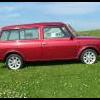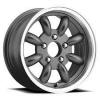As hinted at above, it's not driving that wears out rubber cones. It's simply time. Late Rover cones last about 7 years before they start to fail.
The MPI's were not that much heavier than the models preceding it.
They were considerably heavier actually. The Mini gradually gained weight during the 90's. From weighing in at a kerb weight of around 650kg in the mid 80's the official kerb weight of the MPi was over 800. More bitumen pads, more soundproofing, thicker carpets, larger seats, more coolant, injection equipment and SRS systems, armoured door bars. It all adds up and by far the biggest weight gain was found in the change to MPi. Rover changed the rubber compound of the cones, added bump stops to the rear and extended those at the front with a spacer to try and help.
Regarding the MPI weight, true the MPI's were heavier, but that increase isn't going to flatten the front cones much sooner than a 80's Mini. Certainly not to the extent of utterly collapsing them. It wasn't as though the weight doubled. It's only the weight of an adult passenger...
The rear bump-stops were meant to deal with clunking of the cones when unloaded. The front spacers were meant to give extra clearance for the big 12" and 13" wheels being used in the later Minis. Both changes were done before the MPI's (90s, rear bump stops actually 1st showed up on the ERA Turbos.)
I actually thought Rover softened the cones for a better ride - I can't recall, but this re-mixed rubber compound was introduced before the MPI Minis. Anyway, I had 63,000km on my MPI cones. They were still serviceable, and they looked like any other cone with 63,000+ km I've seen (squashed somewhat, but not collapsed or crushed nearly flat.


















